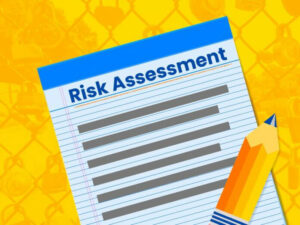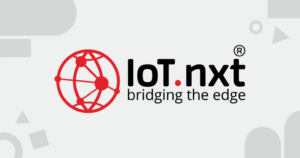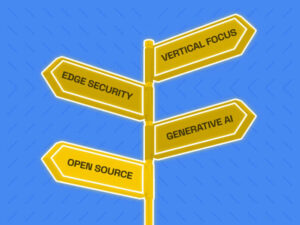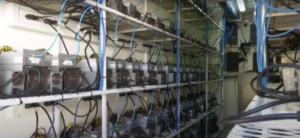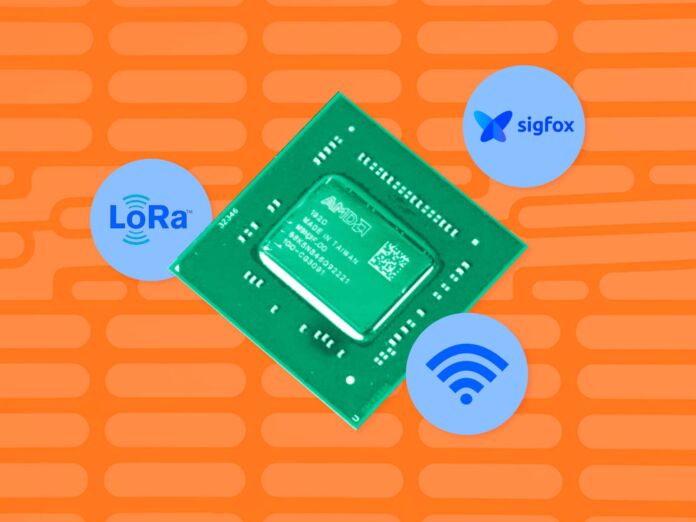
Some IoT systems are too important to fail. Connected utility meters must not miss malfunctions or system abnormalities. The performance of smart security systems and emergency-response solutions can literally save lives. Then there’s asset monitoring, which becomes especially crucial for cold chains.
Everything from vaccines to frozen steaks must maintain strict temperature protocols. If you ship these products, your business can’t succeed without rock-solid temperature data—and IoT asset trackers deliver.
But what happens when an IoT device loses connectivity, even for a moment? Given the uneven roll-out of machine-to-machine networks across the globe, such interruptions are likely. If they occur in your vaccine supply chain, that’s a serious risk. You could fall out of compliance with health codes. Even worse, you might not know when (or why) a shipment is compromised.
Luckily, there are technological solutions for dependable data integrity, even when connectivity fails. The trick is to build redundancy into your IoT tech stack—and that starts with hybrid IoT fleets, which pack multiple network capabilities into a single device.
“Luckily, there are technological solutions for dependable data integrity, even when connectivity fails.”
But that’s just one element of a truly dependable IoT data environment. Here are the three technologies you need to ensure data integrity in massive IoT deployments.
Three Crucial Elements for More Dependable IoT Data
Hybrid IoT isn’t just for tracking assets across the cold chain. The more massive your deployment, the more likely you’ll need multiple connectivity technologies. That makes hybrid the likely approach for smart utility metering, large-scale facilities management, and global supply chain visibility, too.
But to ensure data integrity—and that data is easy to use, not locked away into multiple data silos—you need at least three technologies in your IoT ecosystem.
1. Hybrid IoT Devices
Today’s IoT chipsets offer more ways to connect than ever before. They’re more likely to connect via LoRa and WiFi at once, for instance. Some may combine Sigfox 0G technology with satellite networking. Over the next two to three years, expect to see more combinations of connectivity packed into more chipsets.
That flexibility creates more options for keeping devices connected. It gives you the best return on your investment for a massive IoT project. But hybrid IoT deployments also create new challenges.
Each network operates on a unique tech stack. That can lead to fractured experiences with a hybrid fleet, as your LoRa devices send data to one network communication server, while a WiFi device sends data to another. You can easily end up with data silos that limit usefulness. Even worse, an unalloyed hybrid deployment forces you to juggle multiple platforms to access all your data.
Good news, though: There is a solution, and it’s the next item on our list.
2. Tech-Agnostic IoT Middleware
To take advantage of all your IoT-derived data—automating compliance reporting in the medical cold chain, to name just one example—you need a single-pane-of-glass experience. That’s what IoT middleware provides.
A middleware platform handles back-end data aggregation and processing, allowing information to flow freely into a single user interface. If your fleet—or a single device within the fleet—depends on LoRa, LTE-M, NB-IoT, and Sigfox, you have different technologies to integrate. Middleware accepts them all, sending human-readable data to your business platform without costly development for each new technology.
This approach simplifies IoT development considerably, which drastically accelerates go-to-market times. Just make sure to choose a middleware platform that’s tech-agnostic, capable of working with any and all of your surrounding IT infrastructure.
But even tech-agnostic middleware can’t ensure IoT data integrity on its own. For that, you need an additional value-added service built into your middleware platform: Data reconstruction.
3. Integrated Data Reconstruction Capabilities
Data reconstruction services show the power of hybrid-connectivity chipsets. This capability allows devices to store sensor readings locally—then add them to your centralized data warehouse when connections are dependable. If LoRa fails in the field, WiFi will salvage your data when devices return to your home base, for example.
To understand the value of data reconstruction, let’s return to our asset-tracking example. Say you use devices that collect geolocation data and product temperature for cold-chain products. Then say these devices push data primarily via the Sigfox 0G network.
But you also operate a global cold chain. One region’s network coverage might not be as strong as another’s. As your assets pass through a low-coverage area, data points stop flowing to your system. That can leave you with gaps in the log—a disappearing asset, during which blackouts you don’t know conditions, locations, or events. You do know, however, that the device will come back to your warehouse soon.
You control the network infrastructure at your warehouse, so you know it’s dependable. When the device returns to your WiFi network, it can push data and rebuild the device database. The system reconstructs all the data this tracker collected even while it was out of coverage.
Most importantly, a data reconstruction service avoids loss of data integrity—it offers a clear and accurate picture of everything you’re tracking (location, temperature, impacts, door status, etc.) even during those periods when the device loses coverage.
Data reconstruction offers powerful protection for IoT systems well beyond asset monitoring, too. It allows facility-critical systems like air ventilation, temperature, and humidity sensors to keep records of sensor data during network outages. It can even provide essential security data if someone tampers with a smart alarm system.
In short, data reconstruction offers a backup resource for your most valuable IoT data—and as an integrated part of a middleware system, it doesn’t require specialized IT expertise from your team. The whole system is essentially plug-and-play: Just connect middleware to your business platform, deploy your devices, and go. It’s the fastest and most dependable way to get your IoT system up and running—which means whatever you’re using it for, IoT development won’t delay go-to-market for another instant.
- SEO Powered Content & PR Distribution. Get Amplified Today.
- PlatoAiStream. Web3 Data Intelligence. Knowledge Amplified. Access Here.
- Minting the Future w Adryenn Ashley. Access Here.
- Buy and Sell Shares in PRE-IPO Companies with PREIPO®. Access Here.
- Source: https://www.iotforall.com/ensuring-data-integrity-for-massive-iot-deployments
- :is
- :not
- $UP
- 1
- 8
- a
- accelerates
- Accepts
- access
- accurate
- across
- add
- Additional
- ADvantage
- aggregation
- AIR
- alarm
- All
- Allowing
- allows
- also
- an
- and
- Another
- any
- approach
- ARE
- AREA
- AS
- asset
- Assets
- At
- away
- back
- Back-end
- Backup
- base
- BE
- becomes
- before
- BEST
- Beyond
- build
- built
- business
- but
- CAN
- capabilities
- capable
- centralized
- chain
- chains
- challenges
- Choose
- clear
- cold
- collect
- combinations
- combine
- come
- Communication
- compliance
- Compromised
- conditions
- Connect
- connected
- Connections
- Connectivity
- control
- could
- coverage
- create
- creates
- crucial
- data
- data points
- data warehouse
- Database
- delay
- deliver
- dependable
- deploy
- deployment
- deployments
- Development
- device
- Devices
- different
- disappearing
- do
- Doesn’t
- Dont
- Door
- drastically
- during
- each
- easily
- easy
- ecosystem
- element
- elements
- end
- ensure
- ensuring
- Environment
- especially
- essential
- essentially
- etc
- Even
- events
- EVER
- everything
- example
- expect
- experience
- Experiences
- expertise
- facilities
- FAIL
- fails
- Fall
- fastest
- field
- FLEET
- Flexibility
- flow
- Flowing
- For
- Forces
- from
- frozen
- gaps
- get
- given
- gives
- Global
- globe
- Go
- Go-To-Market
- Handles
- happens
- Have
- Health
- here
- Home
- However
- HTTPS
- human-readable
- Hybrid
- if
- Impacts
- important
- in
- information
- Infrastructure
- instance
- instant
- integrate
- integrated
- integrity
- Interface
- into
- investment
- iot
- IoT Device
- IT
- ITS
- jpg
- just
- just one
- Keep
- keeping
- Know
- large-scale
- lead
- least
- Leave
- like
- likely
- LIMIT
- List
- Lives
- location
- locations
- locked
- Loses
- loss
- maintain
- make
- MAKES
- malfunctions
- management
- massive
- max-width
- May..
- means
- medical
- might
- moment
- monitoring
- more
- most
- multiple
- must
- name
- Need
- network
- networking
- networks
- New
- news
- next
- of
- offer
- Offers
- on
- once
- ONE
- operate
- operates
- Options
- or
- our
- out
- Outages
- over
- own
- Pack
- packed
- part
- pass
- performance
- periods
- picture
- platform
- Platforms
- plato
- Plato Data Intelligence
- PlatoData
- points
- power
- powerful
- primarily
- processing
- Product
- Products
- project
- protection
- protocols
- provide
- provides
- Push
- records
- Reporting
- require
- resource
- return
- returns
- Risk
- satellite
- Save
- say
- security
- security systems
- see
- send
- sending
- sends
- sensors
- serious
- service
- Services
- Short
- show
- silos
- single
- smart
- So
- solution
- Solutions
- some
- Someone
- Soon
- specialized
- stack
- starts
- Status
- Stop
- store
- strict
- strong
- succeed
- such
- supply
- supply chain
- Supply Chain Visibility
- Surrounding
- system
- Systems
- Take
- team
- tech
- technological
- Technologies
- Technology
- than
- that
- The
- Them
- then
- There.
- These
- they
- this
- those
- though?
- three
- Through
- times
- to
- too
- Trackers
- Tracking
- truly
- two
- understand
- unique
- use
- User
- User Interface
- using
- utility
- Vaccine
- vaccines
- Valuable
- value
- via
- visibility
- Warehouse
- was
- Way..
- ways
- WELL
- What
- whatever
- when
- which
- while
- whole
- why
- wifi
- will
- with
- within
- without
- working
- worse
- years
- you
- Your
- zephyrnet

